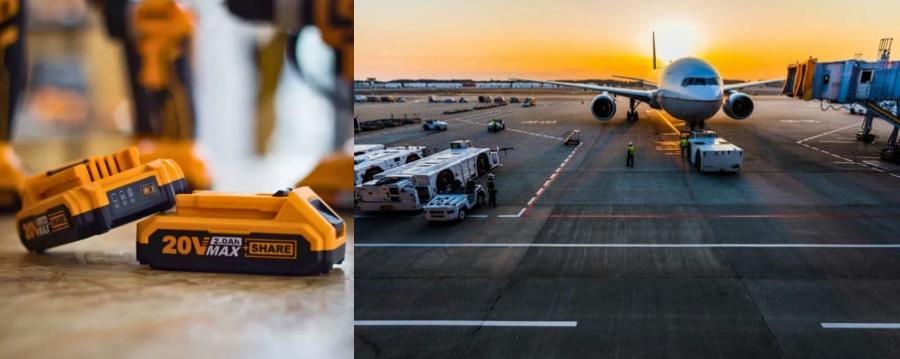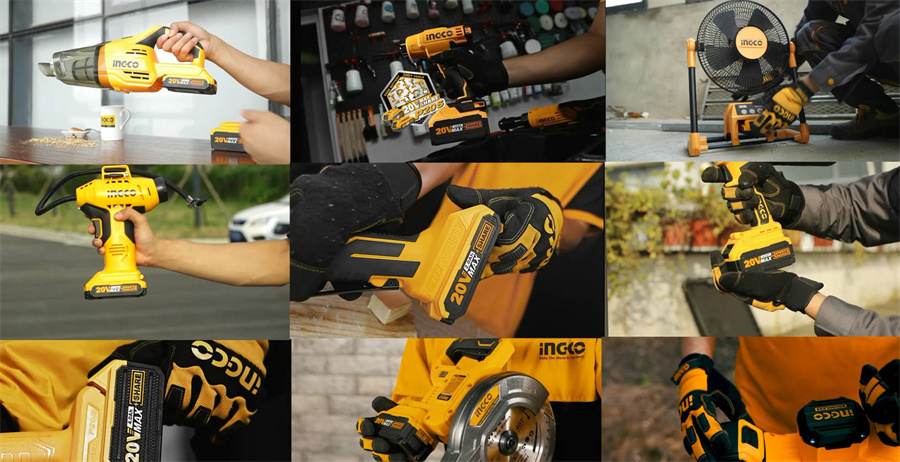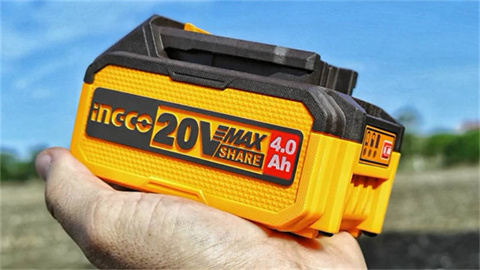Can I Take Battery Power Tools on a Plane? All to Know
Battery-powered tools play an essential role in life, from home improvement to garden work, but traveling with them may be troublesome and subject to various restrictions. Whether you're a professional needing your tools at a job site or a DIY enthusiast heading to a new project, understanding the rules for air travel with these items is crucial.
So can I take battery power tools on a plane? In this blog, we explore the answers and discuss the right way to pack these tools for air travel. We’ll also provide a list of commonly banned and restricted items related to battery power tools to ensure a hassle-free travel experience. Dive in to find out how to fly with your essential tools without breaking any rules!

Can You Take Battery Power Tools on a Plane?
Most workers, especially those who are often on the go between different projects, may wonder about this question "Can I take battery/power tools on a plane?". Now comes the answer. Yes, you can take battery-powered tools on a plane, but there are specific regulations regarding the batteries that power these tools. Most battery-powered tools use lithium-ion batteries, and the Federal Aviation Administration (FAA) has strict rules on how these batteries can be transported to ensure safety.
For devices with installed batteries, such as power tools, you can bring them in both checked baggage or carry-on luggage. However, when it comes to spare lithium-ion batteries (those not installed in the tool), they must be packed only in carry-on baggage. Spare batteries are prohibited in checked luggage due to the risk of fire.
The watt-hour rating of the battery is important. Batteries under 100 watt-hours are generally allowed without restriction, but you can carry larger batteries (100 to 160 watt-hours) with the airline's approval. Each traveler is typically allowed to carry up to two of these larger batteries in their carry-on.
To prevent short circuits, spare batteries should be stored in their original packaging, or with the terminals covered (using electrical tape or a battery case). Always check with your airline before traveling to ensure compliance with their specific policies, as different airlines may have additional restrictions.
How to Pack Battery Power Tools for Air Travel
Since we know whether can power tool batteries go in checked luggage, now let's see how to pack them properly to comply with airline safety regulations and ensure your tools arrive undamaged. Here’s a guide on how to pack battery power tools for air travel:
Check Airline and TSA Guidelines
Before packing your tools, always check the specific guidelines of your airline and the Transportation Security Administration (TSA). While most airlines follow the FAA’s guidelines for lithium-ion batteries, individual carriers may have additional restrictions. Review the airline's website or contact them for clarification if you're unsure.
Pack Tools with Installed Batteries
If your battery-powered tools have installed batteries, you can pack them in either your carry-on or checked baggage. However, it’s safer to pack them in your carry-on because checked baggage could be mishandled, increasing the risk of damage. Ensure that the tool is turned off and cannot accidentally power on during transport.
Handle Spare Lithium-Ion Batteries Properly
Spare lithium-ion batteries must be packed in your carry-on baggage. These batteries pose a fire risk and are not allowed in checked luggage. To protect the terminals and prevent short circuits, pack the batteries in their original packaging if possible. If the original packaging is unavailable, cover the battery terminals with electrical tape or use a protective case designed for batteries. This minimizes the risk of accidental discharge or short-circuiting.
Understand Watt-Hour Limits
There are limits on the size of batteries you can bring. The FAA allows batteries under 100 watt-hours to be packed without restriction. If your tool's battery exceeds this, you may carry batteries between 100 and 160 watt-hours with the airline’s approval. Typically, you are allowed two spare batteries of this size. Ensure you know the watt-hour rating of your batteries by checking the label or calculating it by multiplying the battery’s voltage by its amp-hour rating.
Secure Power Tools
Pack your power tools securely to prevent damage during travel. If you’re packing tools in your checked baggage, use a hard-sided case or a toolbox with padding to protect them from rough handling. In your carry-on, ensure that tools don’t shift around and are packed securely with sufficient padding.
Label and Organize
For quick inspections, organize your tools and batteries neatly in your bag. Labeling the batteries with their watt-hour ratings can help speed up security checks.
Commonly Banned and Restricted Items Related to Battery Power Tools
When traveling by air, it's crucial to be aware of the specific items related to battery power tools that are banned or restricted. Here’s a detailed list of what you should avoid carrying in your hand baggage and which specific tools may face restrictions:
Loose Lithium Batteries: Carrying loose lithium batteries in hand luggage is prohibited due to their high risk of causing fire hazards. These must be carried in carry-on luggage only, and properly secured.
Power Tools with Sharp Edges: Tools such as saws, drills, and other devices that have sharp components are generally not allowed in hand luggage. They must be checked in to avoid safety risks to passengers and crew.
Large Battery Packs: Battery packs exceeding 160 watt-hours are not permitted on flights due to their potential hazard. Smaller batteries, typically under 100 watt-hours, can be carried in hand luggage but may require airline approval if they are between 100 and 160 watt-hours.
Fuel-Powered Tools: Any tools that operate on fuel, such as gas-powered saws or drills, are strictly banned from both carry-on and checked luggage due to the extreme fire risk they pose.
Pressurized Containers: Items like aerosol cans or any other type of pressurized container that might be used with power tools are also banned from carry-on luggage and are typically restricted in checked baggage as well.

Conclusion
Next time you want to take battery power tools on a plane, you can be sure that it's possible to travel with these tools, but doing so requires a careful understanding of and adherence to specific guidelines concerning battery types, capacities, and proper packing methods. Moreover, each airline may have its own set of rules, which further complicates the process but ensures passenger and flight safety.
As a result, it is important to always verify the latest regulations with your airline before you travel to avoid any disruptions. This careful preparation ensures that your essential tools can accompany you safely, wherever your work may take you.
FAQs
Can I carry a battery trimmer in flight?
Yes, you can carry a battery trimmer on a flight, but the batteries must be removed and placed in your carry-on luggage if they are lithium-ion. The trimmer itself can go in checked baggage, but make sure to pack it securely to avoid damage. Always check the watt-hour rating of the battery to ensure it complies with airline regulations.
Can I carry cordless power drills in my luggage?
Cordless power drills can be transported in checked luggage with the battery removed and carried in your hand luggage. Ensure the drill is packed securely to prevent it from becoming a hazard during handling and transit. It's also a good idea to consult your airline's specific policies as some might have additional requirements or restrictions.
What happens if my battery exceeds the airline’s watt-hour limit?
If your battery exceeds the airline's watt-hour limit, it may not be allowed on the plane. Some airlines allow batteries up to 160 watt-hours with prior approval, but this varies. You might need to ship the battery separately using a cargo service that handles dangerous goods.
Do I need to declare power tools at security checkpoints?
Yes, it's advisable to declare power tools and their batteries at security checkpoints. This will help the security personnel to assess the items quickly and prevent any misunderstandings. Additionally, showing documentation or manuals can assist in verifying that the items are safe for air travel.



